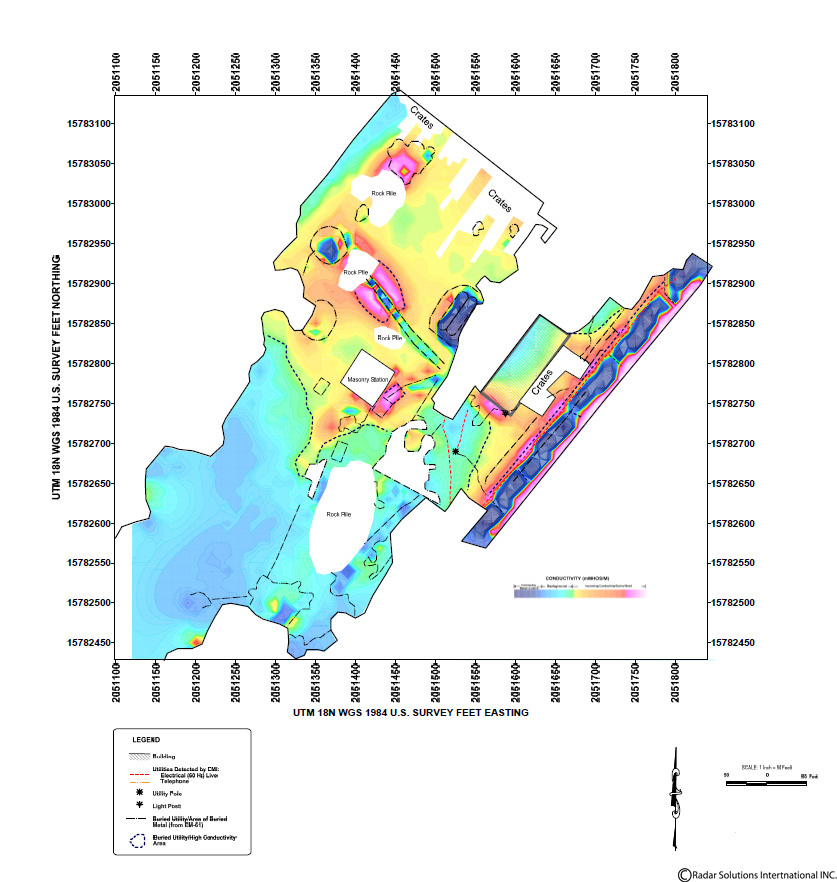A former gas station, located in the Adirondack Region of NY, improperly disposed of UST's and other bulk waste in the mid-1980's. Since then, the site ownership has changed a number of times and lost the documentation pertaining to the location of these UST's and terminals. In late 2014, Precision Environmental Services (PES) contacted Radar Solutions International, Inc. (RSI) to locate and identify UST's, piping, disturbed fill and utilities.
In Early December 2014, RSI's President and Senior Geophysicist Doria Kutrubes directed Geophysicist Cameron Russ and Geophysical Technician Rick Lammey to perform a ground penetrating radar (GPR), EM-61, EM-31 and EM Induction (EMI) survey over a 9 acre area.
Data collected using GSSI's SIR-3000 and a 400 MHz antenna achieved an average 7.5ft of penetration. The compiled GPR data identified lineaments and other structures located in the subsurface throughout the site. One of the most notable features is piping running through the middle of the site (2051510 E, 1578279 N) to (2051350 E, 1578295 N) as seen below.

Contoured EM-31 data

Contoured EM-61 data
These findings are further supplemented with data collected using both Geonic's EM-61 and EM-31, where each of these units identified the same piping that extends out to an UST at (2051510E, 1578279 N) to (2051350 E, 1578295 N). Both EM-61 and EM-31 units were able to locate multiple metal targets throughout the site. The EM-31 also located a zone of contamination as indicated by the increase in conductivity towards the piping. Using the McLaughlin GX EM Induction tool, live utilities were located in certain areas of the site, However, most of the area contained utilities that are no longer in use and could not be detected using the induction method, which emphasizes the usage of our other geophysical methods. With the implication of these four geophysical techniques, RSI as able to help our client expedite their remediation efforts.
Acknowledgements: We would like to thank PES for providing us with an excavator and clearing areas that were deemed inaccessible, which helped us further expand our scope of work.